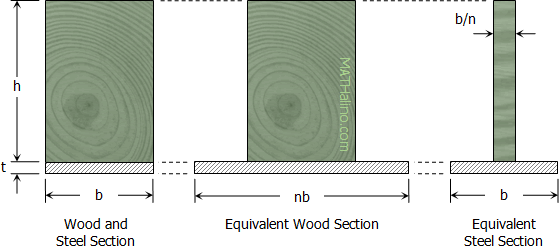Beams with Different Materials
From assumption no. (3) in the previous page: The strains of any two adjacent materials at their junction point are equal.
$\epsilon_s = \epsilon_w$
$\dfrac{f_{bs}}{E_s} = \dfrac{f_{bw}}{E_w}$
$\dfrac{f_{bs}}{f_{bw}} = \dfrac{E_s}{E_w}$
- Read more about Beams with Different Materials
- Log in to post comments

